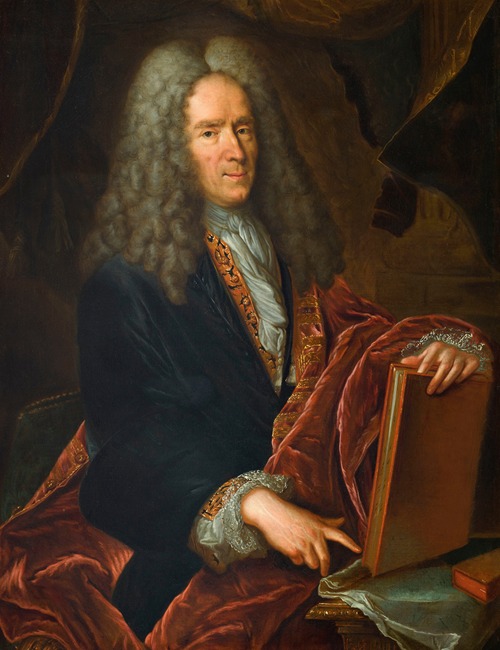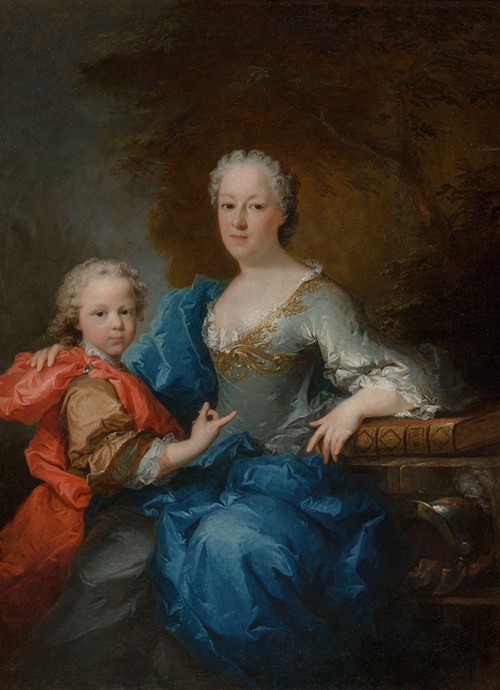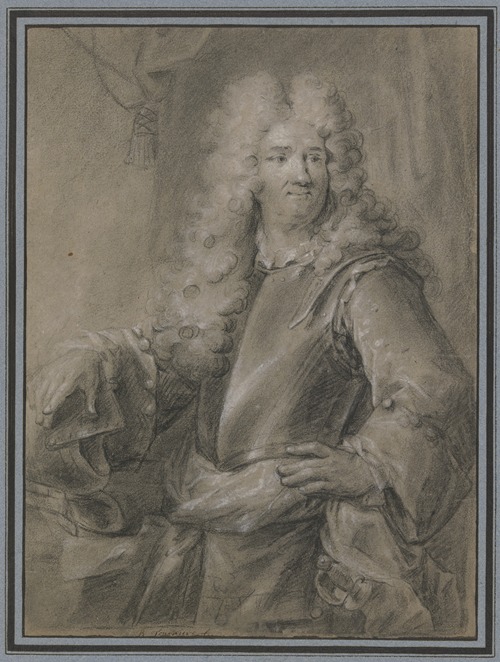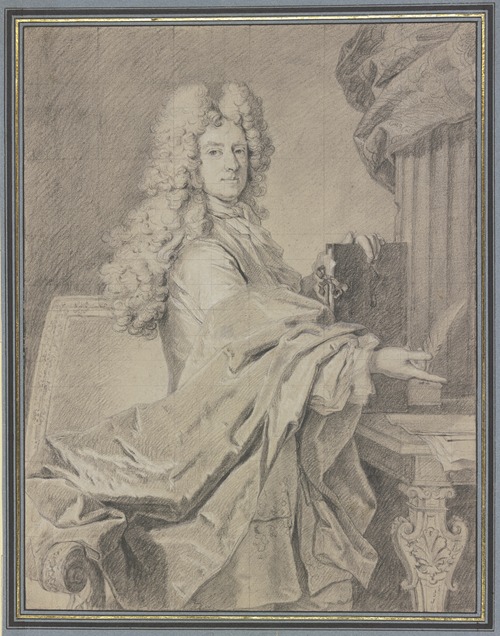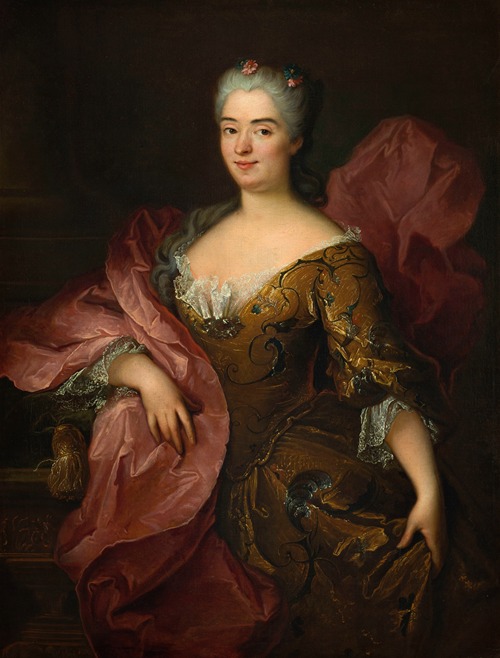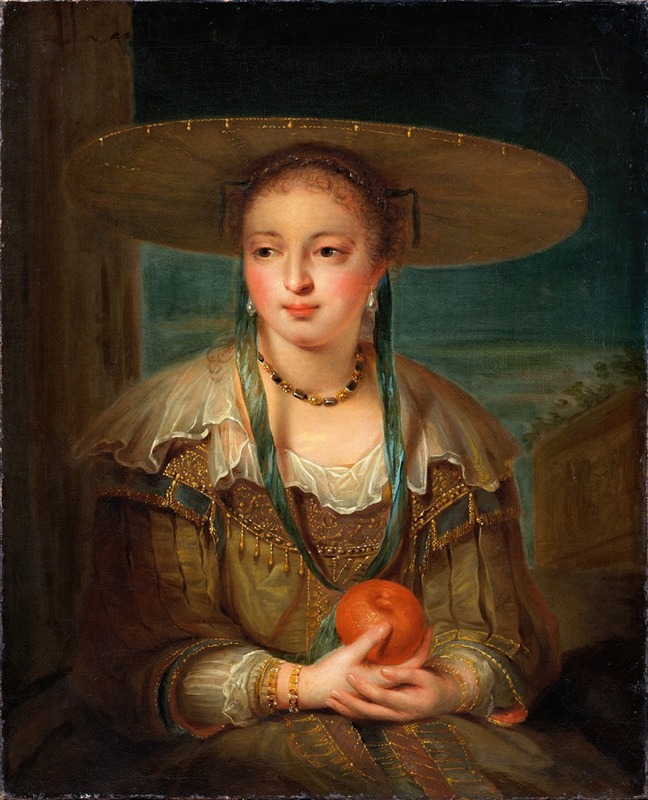
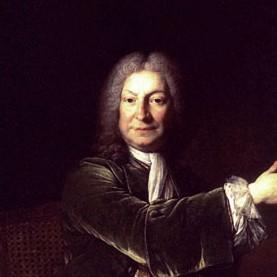
Robert Le Vrac de Tournières was a French painter. After the Second World War, a street in the new Saint-Paul district of his home city of Caen was named rue Robert Tournières.
Studying under Lucas Delahaye, then under Bon Boullogne and Rigaud, Tournières was notable for being received twice into the Académie royale de peinture – first in 1702 as a portrait painter, with his portraits of the painters Pierre Mosnier and Michel Corneille; and then on 24 October 1716, as a history painter, with his Invention of drawing (1716), showing a pair of lovers lit by a single candle. Promoted to professeur auxiliaire in 1737, he exhibited successfully at the 1742 salon.
His œuvre's heterogenous nature is typical of an artist of the transitional period of the French Regency – the Dutch elements give his work a new and more intimate character, while the lightness of his palette prefigures the rococo style. He produced large-scale paintings of which all trace is lost and small paintings in which he distinguished himself were preoccupied with Godfried Schalken and Gerard Dou, of whom he had made a special study. These are now dispersed, if not entirely lost.
With a talent for painting and portraying faces, Tournières enjoyed a great reputation during his lifetime. He left a considerable number of portraits which are mostly in notable collections. He showed a delicate colouring, a perfect talent for pose and positioning, a certain elegance in drapery. He was, according to an eminent critic, an artist who was more careful than powerful and, unable to be accounted as being in the first rank of portraitists, he still won an honourable place among them.
Returning to Caen in 1749, he stopped painting. His father, an engraver by trade, had married a widow who had a son, who was François Lemoyne.
